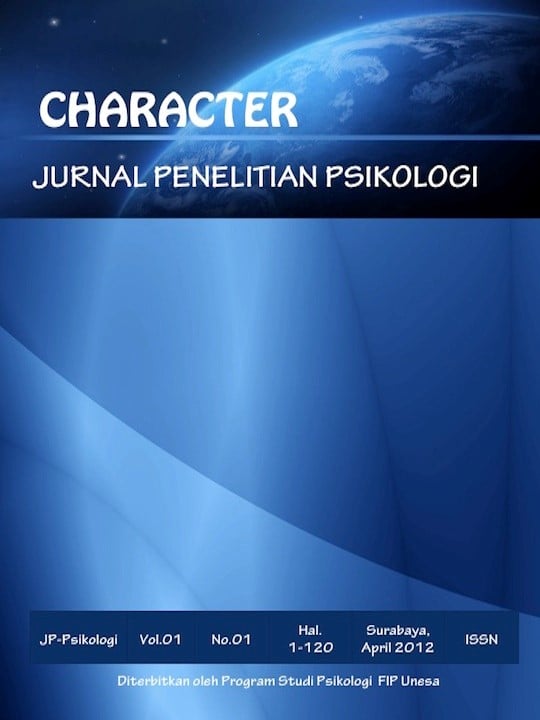HARAPAN PADA PEREMPUAN YANG BELUM MEMILIKI ANAK
DOI:
https://doi.org/10.26740/cjpp.v9i2.45974Abstract
Abstrak
Penelitian ini mengkaji tentang harapan pada perempuan yang belum memiliki anak tanpa disengaja (Involuntary Childless). Metode yang digunakan dalam penelitian ini adalah metode kualitatif dengan pendekatan studi kasus pada tiga orang subjek. Data yang digunakan dalam penelitian ini diperoleh melalui wawancara secara mendalam. Data yang ada selanjutnya dianalisis menggunakan analisis tematik berdasarkan teori harapan dan untuk mengetahui keabsahan data menggunakan triangulasi sumber data dengan mewawancarai significant others dan melakukan member cheking. Penelitian ini menemukan bahwa terdapat perbedaan pathway thinking antar subjek. Subjek 1 dan 3 memiliki memiliki pathway thinking berupa usaha secara spiritual dan medis, melakukan program hamil, dan memiliki alternatif ketika menghadapi hambatan. Sedangkan pada subjek 2 hanya memiliki pathway thinking dengan memperbaiki kualitas hidup dan tidak melakukan usaha lain yang lebih berarti karena merasa sudah lelah. Meskipun terdapat perbedaan pada pathway thinking, penelitian ini memberikan pemahaman bahwa perempuan yang belum memiliki anak tanpa sengaja tetap memiliki harapan untuk memiliki anak.
Kata Kunci: Involuntary Childless, Harapan, perempuan
Abstract
This study examines the expectations of women who have not had children by accident. The method used in this research is a qualitative method with a case study approach on three subjects. The data used in this study were obtained through in-depth interviews. The existing data were then analyzed using thematic analysis based on the theory of expectations and to determine the validity of the data using triangulation of data sources by interviewing significant others and doing member checking. This study found that there are differences in pathway thinking between subjects. Subjects 1 and 3 have pathway thinking in the form of spiritual and medical efforts, carry out pregnancy programs, and have alternatives when facing obstacles. Meanwhile, subject 2 only has pathway thinking by improving the quality of life and not doing other more meaningful efforts because they feel tired. Although there are differences in pathway thinking, this study provides an understanding that women who have not had children accidentally still have hope of having children.
Keywords: Involuntary Childless, Hope, Girl
Downloads
Downloads
Published
How to Cite
Issue
Section
License
Authors who publish in this journal agree to the following terms:
Copyright in any article is held by the author.
The author grants the journal, publication rights with the work simultaneously licensed under a Creative Commons Attribution License that allows others to share the work with an acknowledgment of the work's authorship and initial publication in this journal.
Authors may enter into separate, additional contractual arrangements for the non-exclusive distribution of the journal's published version of the work (e.g., posting it to an institutional repository or publishing it in a book), with an acknowledgment of its initial publication in this journal.
Authors are permitted and encouraged to post their work online (e.g., in an institutional repository or on their website) prior to and during the submission process, as this can lead to productive exchanges, as well as earlier and greater citation of published work.
 Abstract views: 565
,
Abstract views: 565
, PDF Downloads: 1053
PDF Downloads: 1053





